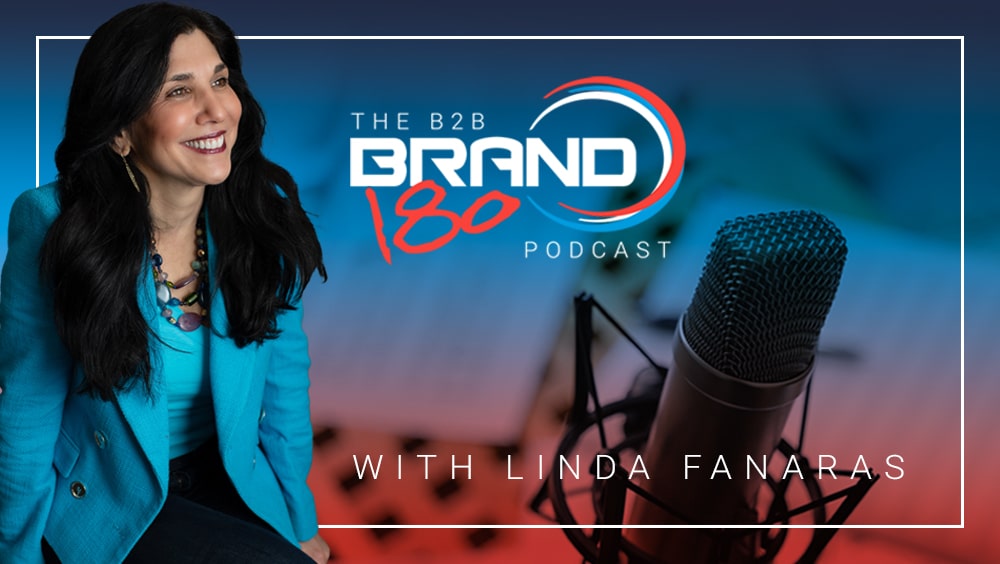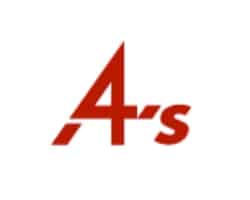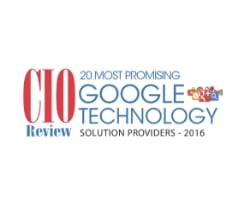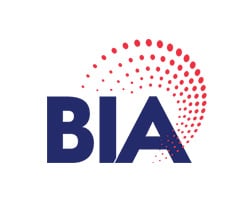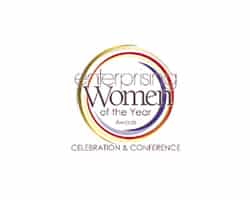In this episode of the B2B Brand180 podcast, Linda interviews Mark Dingman, Creative Director at Millennium Agency. They discuss the common misconception that a brand is just a logo, highlighting the importance of a deeper discovery process to understand a company’s identity, personality, and target market. Mark emphasizes the pivotal role of market research, competitive analysis, and courageous, authentic messaging in setting a brand apart in the B2B landscape. Mark and Linda offer valuable insights for companies rebranding or launching a new brand, encouraging them to adopt genuine, meaningful and creative differentiation strategies.
01:07 The Essence of Branding Beyond the Logo
01:26 Unpacking the Brand Discovery Process
05:38 The Power of Market Research in Branding
06:50 Competitive Analysis: Standing Out in the Market
09:40 Creative Direction: Merging Business Goals with Brand Identity
11:53 Stylescapes and Mood Boards: Visualizing the Brand
15:48 Unique Branding Strategies: Pushing the Envelope
For more on Mark, visit https://www.linkedin.com/in/mrdingman/ or https://mill.agency
Linda’s LinkedIn: https://www.linkedin.com/in/lindafanaras/
Millennium Agency: Brand Strategy | Marketing | Web Design: https://mill.agency
YouTube Channel: https://www.youtube.com/@mill.agency/
Linda’s Books:
Claim Your White Space
https://www.amazon.com/CLAIM-YOUR-WHITE-SPACE-CRITICAL-ebook/dp/B0CLK8VLYV
Passion + Profits: Fueling Business And Brand Success
https://www.amazon.com/Passion-Profits-Fueling-Business-Success-ebook/dp/B0CLLDDSNX/
Linda Fanaras:
I’m Linda Fanaras, host of the B2B Brand CEO of Millennium Agency. We’re here today to talk about branding and growth strategies that are designed to help your business grow. But before I start, I just want to thank our listeners. And if you like what you hear today, please hit like, share, or subscribe. So today I’m very excited to bring in our own Mark Dingman, the creative director here at Millennium Agency. Welcome Mark to the B2B Brand 180 podcast. Thanks for joining me today.
Mark Dingman:
Well, it’s great to be here. I hear about this podcast all the time, listening to the episodes. Finally get to be a part of one. Looking forward to it.
Linda Fanaras:
Fantastic. So let’s start out with a quick introduction, Mark. How about you tell us a little bit about yourself?
Mark Dingman:
Ooh, there’s a lot to tell. So, hi. I am the Creative Director at Millennium Agency. I have been for, I don’t even know how long good
Linda Fanaras:
decade. Anyway,
Mark Dingman:
at least a decade. I enjoy doing a lot of the, the branding work, the creative work. Everything’s a little bit different. It’s the. The short bio on the millennium.
Linda Fanaras:
So today we’re going to talk a lot about logo, logo design, and how that ties into the branding process. So basically your brand is not a logo and some companies do think that the branding is a logo and that’s all it is, but it entails so much more than that. So. I would love to get it from a creative perspective of, you know, what does that look like for a company who wants to go through a branding process? Mark? Like, how does that discovery process work? What can a company expect to experience during that process? How long might it take? I know I tied in three questions to the one question, but maybe you can speak a little bit about that whole discovery process.
Mark Dingman:
the discovery process for us is really interesting because it’s where we get to really understand our clients and Really like dive deep into who they are, what makes them tick their different personality and just really learn all aspects of their company. And then what we’ll do is go and we’ll go back and figure out now, what, what did we learn from them that will appeal to a broader audience or their, their market, the target they’re trying to hit? So I guess not like you said, it’s not just the logo. It’s. all aspects of their business. It’s the personality and how they talk, how they respond to things, all of the aspects of it. So it’s really interesting to pull out the personalities of the people behind the company and bring that to the forefront and how making that emotional connection so that when you’re looking at a brand and there’s no one there to talk about it other than the website that’s directly in front of you. And just to have that, that tone and that, the way they talk on a website or a piece of branding materials and have it Match what it’s like to talk to that same company on the phone or in person. That’s when a brand is super successful is when what, what you see and read outside of talking to them directly match. And that’s really the goal of what we do is to bring all of that together so that the logo matches the logo, the color scheme, photography, videos, everything is unified matches and has the common purpose.
Linda Fanaras:
And I love to look at, I mean, even if you look at some of the larger brands that, you know, we’ve worked with over the years, whether it’s a edX or triple a or TJ Maxx. They all have a very specific brand identity that people can connect to on an emotional level. So, Amazon’s like a great example because anybody who buys from Amazon knows that they can have a variety of options to choose from. It’s a relatively good, you can find great pricing and they can get it within a day or two. And that in itself is a feeling that you get when you’re working, when you’re you, you want to kind of create that. Feeling that you’re talking about when somebody sees a brand or talks about a brand, and it’s not even it’s not just the logo, but it’s like, what does it stand for? So do you have any additional insight? Thoughts on that? I
Mark Dingman:
mean, when you think about Amazon, just in general, like, if you go back and look at the history of their website, Their head, their website is not, was not the best website. It wasn’t the most designed website, but it was very direct in the information that it provided. And that’s how it just kind of built itself up. And while visuals are super important. The, the user experience, especially in web is just as important. And when Amazon started putting reviews, I don’t have the data on it, but being able to have that social proof is another thing that helped that site grow more and more. it’s, it’s really interesting to see that it wasn’t, it wasn’t design led, it was very like UX led and styled in a way that drove people to their destination and gave them an easy way to buy things and cut out all the steps of having to go to the store. Look for your book, find it on the shelves, go to the cash register, pay for it. It’s just a limited so many steps and that’s how they’ve been able to do what they’ve done.
Linda Fanaras:
Yeah. And they’ve done some amazing things. How important do you think the market research process is for a company who engages in developing a brand for another company? Do you think research is important?
Mark Dingman:
Research is really important because as much as we want to learn about the company and get all their details and understand why they’re doing what they’re doing and bringing in their voice, their tone, their personalities into the brand. We also need to make sure that we’ve done the research for the person they’re trying to speak to, make sure we understand as much as we can about them, who they are, what they do. What they like to do outside of their job, all of those aspects of a person. And the more of a profile that we can build or a use case or understanding of that person, we can then craft our language, our color schemes, our visuals to resonate with that person and also get them to interact with the brand. we want the personality of the brand. We want the personality of the. Potential client. And we want them to become best friends, really. And that’s, that’s what we do.
Linda Fanaras:
I agree. Market research is so important, especially when it comes to looking at competitors to see, you know, a lot of times we’ll, we’ll hear from a client that says, Oh, here’s my competitor. I like, what their look and feel is, but we make it real big effort to not look like a competitor. And there’s reasons for that. I think it’s important. I’m sure you could speak more about this is that we’re looking for that unique identifier, especially in the brand identity and in the messaging and how we’re positioning the company based on what you said. Mark who are they as a company? What is their personality? How do we tie all this together to really make it resonate with the market? So as far as competitor data, is there specific aspects Information that you like to look at when it comes to taking a look at competitor data website versus logo versus naming. Is there anything you could share around that
Mark Dingman:
as far as talking competitors? you want to make sure that 1, the logo doesn’t look like the logo of a competitor. The color schemes there. There are the industries. Well, there’ll be similarities. Tech is always blues, healthcare is a lot of blues, purples, cooler, inviting colors. So you want to find, but even then you can still do different variations of those primary colors to be unique. And a lot of the uniqueness when you’re looking at companies is a lot, especially in B2B, a lot of them say very similar things. And it’s the companies that are willing to say things. a little bit differently or something that’s not where you were like, Oh, should I really say that you probably should, they should be things that grab your attention. And the companies that hold the line do the standard spiel they might have a really great visual, but if the accompanying content, the text, what they’re saying doesn’t stand out as much as the visual there, it just kind of blends in. So really having a unique personality and a way of talking about what you’re trying to do and getting people excited to work with you is, is a big thing that we find when we’re doing competitive research where it’s not that excitement doesn’t necessarily stand out a lot of the time.
Linda Fanaras:
And
Mark Dingman:
being being able to show the excitement and passion for what you do Is a large differentiator whenever we’re looking at competitor research,
Linda Fanaras:
right? Right and make helping them stand stand alone stand separately So let’s say you’re working with a client and you’ve gone through that discovery process you’ve done some market research and then you’ve determined their personality and The tonality that they like and how they like to speak and what their culture is and all the things that help put together the brand identity and what their goal is as a company, where they’re headed to go and what direction they’re headed how do you, as a creative director, determine the direction, the creative direction of that brand? I mean, you have so many different things to look at, you know, it’s could be their personalities, one thing, and then their business goals are another thing. And then their culture is another thing. How do you tie all those things together to make it? Work to their advantage.
Mark Dingman:
That’s the challenge. It’s it’s a lot of different things to tie together and Every projects a little bit different sometimes We’ll start with the visuals. We’ll start with stylescapes and those stylescapes will give the visual tone of where we’re going with some something but it may not necessarily cover all of the Content personality and that’s where the Visual will set the tone for the content moving forward and then there’s other times where we’ll talk with Clients through discovery and they have extremely strong personalities,
Linda Fanaras:
right?
Mark Dingman:
And if we were to do Dull content that personality doesn’t shine through and it’s a missed opportunity. Most of the time the visuals will lead into the content and the personality, but there’s always the times where you can just sense the passion talking with a client or during discovery and taking their cues and just. Spinning it into larger messaging language and branding language and the visuals. that’s what Brings it all together. It’s just that authenticity of having the brand become the people that they’re talking to when they start to talk to the company.
Linda Fanaras:
we work with companies that actually may want to change the direction of the company, which can also add another element of complexity to it. So, I mean, we have sort of what did we call our white space process where we’re able to identify. The white space in the market that maybe they haven’t taken advantage of or that they may find there’s a bigger opportunity there, which helps with the branding process too. So before I go to my next question, I just want to take a moment and thank the audience for listening in today. So if you like what you are hearing today from Mark, please take a moment to like, share, or subscribe, or feel free to provide a review on the B2B Brand 180 Podcast. So this is my favorite topic because I love design. So when we talk about stylescapes and mood boards, we’ve got some creative direction going. Maybe you can explain to the audience what is a stylescape slash mood board and like what, why do they need one?
Mark Dingman:
So the mood board or stylescape, it’s a really, it’s a really efficient way to pull a lot of visual assets together without going into the full design process for business cards, letterhead, website, styles, animations, video, all of the components. And it’s a, it’s a, cultivation of various color schemes or photography patterns or visual elements, whether they’re lines, bars, like really shapes. And what it does is it kind of tells a story of where the visuals can go for a potential brand and also gives the client an idea of like, here’s what things can start to look like. And it’s rare where we actually will use any particular asset from a style scape, but it’s a, it’s a really good jumping off point. And also what it allows us to do is we can do three mood boards for, and each one can be done by a different designer and they can have a very specific. Thing called out from that discovery process that we talked about earlier, where one might focused focus on a specific personality trait, and then we’ll do two others that are other personality traits. And it gives our clients a wide gamut of ideas. And it helps narrow our focus as we go through that process. As we start to eliminate stylescapes where we get to the one that we’re like, yeah, this is exactly what we want to be. This is exactly how we want to talk. And then when we go into building all of the assets that go into a brand websites, ID pack materials, print ads, digital ads, all of the things, we have this really solid foundation that we have a lot of buy in from the client already so that we’re not iteratively doing multiple versions of these IDs because we’ve already established this is where we’re going. And it makes the process much smoother. After we’ve gotten past the initial stylescaping. So it’s, if you think about it, like as video production or television production, it’s all, it’s all that like pre production work that makes the shooting so much smoother. We’re doing that in a, in design and visuals, just doing all of that pre production so that when we’re ready to roll, build on everything else, we have a narrowed focus on the style and it helps us create even more. More engaging design because we’re not having to cover a large gamut to try to narrow down as we’ve already started to build out lots of different things
Linda Fanaras:
And the move boards, I think, help the client get a visualization as to the direction that to your point. It’s sort of a launching pad. So it gives them a direction as to. Where we may head to that brand. It might not be the exact exact, but at least it gives them some insight on colors and fonts and maybe how we might use photography or how we might not use photography. So I think that that’s a great, a great point. It’s
Mark Dingman:
rare that we ever really use anything, like I said, like it’s, it’s a really good jumping off point, but usually that jumping off point spurs two or three more ideas that are in the essence of the stylescape, but are not necessarily, might not even be a direction that we thought we’d go, but it ends up working well because we already narrowed our focus in a style by using the stylescape process or
Linda Fanaras:
the input
Mark Dingman:
process.
Linda Fanaras:
How do you make the client’s creative strategy different? Is there a process to, that you use to make sure that what you’re creating for them or your team is creating for them is unique and just maybe pushes the envelope a little bit?
Mark Dingman:
My brain, Linda, it’s all in my brain. It’s in your
Linda Fanaras:
brain.
Mark Dingman:
No, and it’s. And honestly, it’s pushing past what we think is the safe option. There’s different brands out there. I’m trying to think of ones that stick out of my head right away. Like, when you look at, like, Harry’s, there’s a lot of, or Harry’s, like the shaving company. Yeah.
Linda Fanaras:
Yeah.
Mark Dingman:
A lot of those direct to consumer companies that would traditionally be going into Stores, Targets, Walmarts, and then you would go to the store and buy it. When you look at, their packaging and their websites, The way that they speak and the, like, the wit Every aspect of it. It’s not just a brown box. It’s a fully printed, inside outside, double sided box. There’s stuff on all of it. And it all uniformly works together. those are the things when we look at brands, we want to be building things that are unique to the industry and in, in B2B, there’s a lot of opportunity to build unique things because a lot of the time B2B is just there and they think, well, this use word of mouth. It’s okay. We don’t need to market. We don’t need to do, come up with cool packaging. But those are the things that make you unique and make people want to come back to you. And it’s, it may not necessarily be a large investment. It might be just something super subtle that something does no one in that industry ever thought of doing before. When we look at it, it might have been. It’s coming from that different perspective. It might be something obvious to us, but not obvious to them because they’ve been in it for so long
Linda Fanaras:
so that
Mark Dingman:
we can we find those things that are just like, well, what if we did this? I’ve seen it done this way in a consumer thing, but we can tweak that idea slightly. And turn it into an idea that works really well in B2B that that’s not something anyone’s doing. And that’s really what we strive to do is find those little niche things that are not necessarily what you would expect from B2B in industry and make them unique. And that’s what helps our create clients that help them stand out.
Linda Fanaras:
That’s great. Thank you, Mark. So do you have a last final tip that you would give to our audience on If they go through the branding process any top tips you could give.
Mark Dingman:
Give us everything. Give us your, your real personality and give us what you really see the company becoming that you, where you want, not just where you are, not just where you’ve been, where you want to be in five years, 10 years, just getting the authentic people that we’re talking to is like, be authentic, don’t hold back things because this isn’t like a business setting. We don’t hold back a lot. So you shouldn’t either. That’s, that’s huge. The other thing is be open to things that scare you. there are times we’ll have some really far out there ideas. Not all of them work, but there are, there are the few that if we don’t push past, like I said earlier, if we don’t push past what we think we should end up at, we never end up making anything great. And we don’t want to stop before we’ve gotten to the point where it’s different. We want to take large swings to be very different and then push it back a little bit. If we need to, I would, we would much rather. And that’s why we have to say, just be open to things because we’ll swing for the fence and then we’ll pair it back to a triple, but it’s still going to be much more unique and farther than where you were six months ago.
Linda Fanaras:
Right. pushing the limit I mean, I think what we find is we, a lot of clients will say they want to push the limit, but when it comes down to it, they do get nervous. And if they can just maintain that existence of pushing the limit, it can help them really stand out.
Mark Dingman:
That’s for sure. I’ve always said that if what we’re presenting scares you. We’re onto something and it’s okay.
Linda Fanaras:
Cause you don’t want to be just like everyone else. So awesome. Mark, thank you so much for joining me today on the podcast. I finally get to do
Mark Dingman:
it.
Linda Fanaras:
I know I’ll have to do another one. But I think all the insights that you provided was great, especially during that whole branding process and what companies should be looking out for when they actually go through this and what’s important and what, what it. What the actual whole process is like and how to get from A to B. And it’s not just a logo, but it’s way more than a logo. So, so thank you again, Mark. Appreciate that. Of course. So I just want to take a moment and thank our audience today for tuning into the B2B Brand 180 podcast. We hope that you found the insights and strategies shared by Mark valuable to your business. And again, if you like what you heard, please hit like, share, or subscribe. Subscribe. Again. I am Linda Fanaras, host of the B2B Brand 180 Podcast and CEO of Millennium Agency. And you can visit us at mil, MILL, do agency or linda fanaras.com or simply connect with us on LinkedIn. Thanks again for listening to the B2B Brand 180 podcast.





